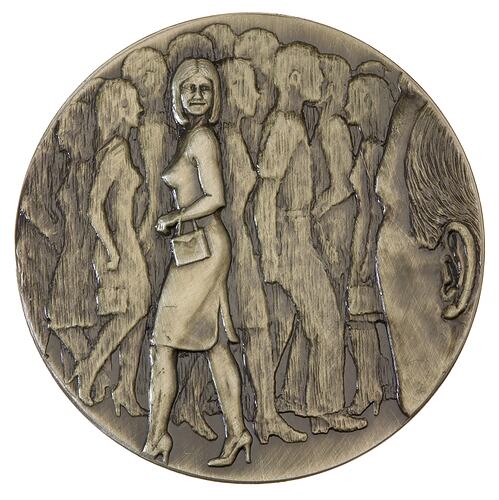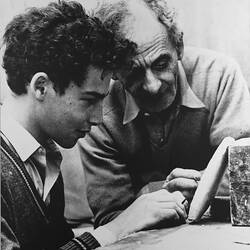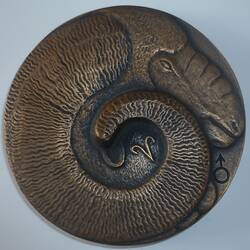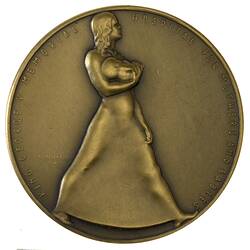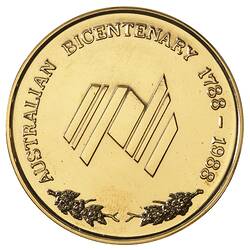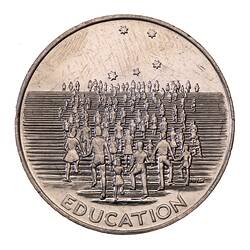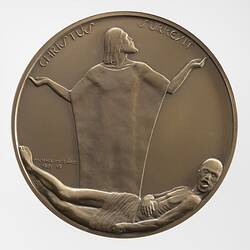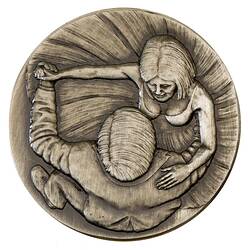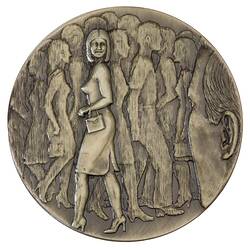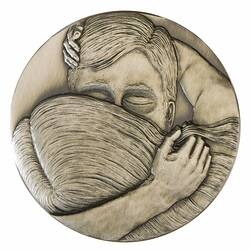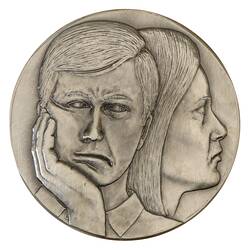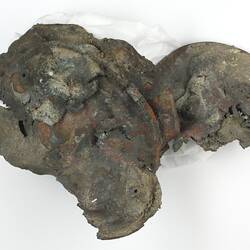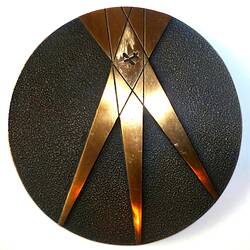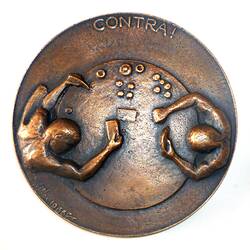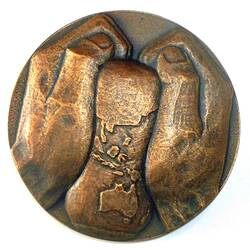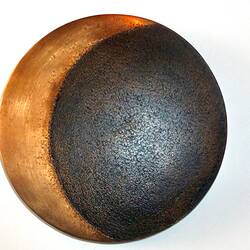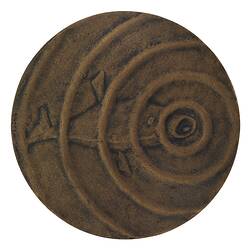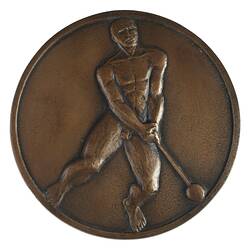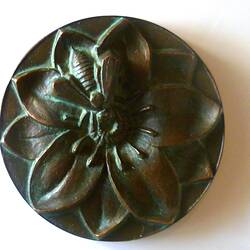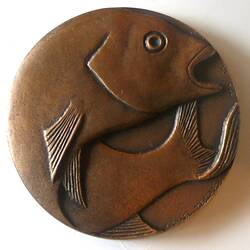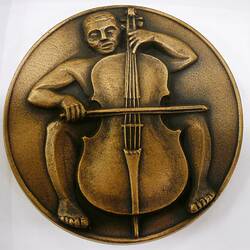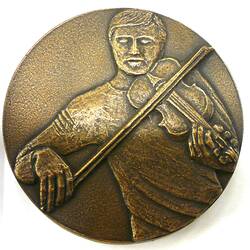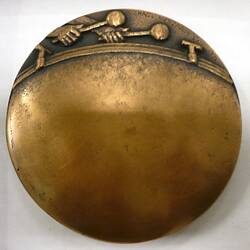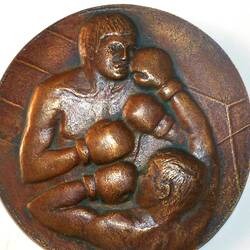Michael Meszaros was born into an artistic tradition, but he has developed a style and reputation uniquely his own.
Son of the sculptor and medalist Andor Mészáros, Michael grew up in a small flat where the living room was also his father's studio. Michael said, 'I watched his artistic processes and struggles, his techniques, triumphs and difficulties.' By the age of 12 he was designing and drawing and at 13 received his first professional commission, a portrait medal of collector and family friend John Gartner. He collaborated with his father on works such as the D.P. Palmer memorial plaquette in 1959.
During the 1960s Michael studied to become an architect, but in 1969 he was awarded a Churchill Fellowship to study medal-making in Italy at La Scuola Dell 'Art Della Medaglia, attached to Rome's main mint. His graduation piece for the course was the beginning of his zodiac series, of which Museum Victoria holds a complete set.
On his return to Australia Michael became a full-time sculptor and medalist. He worked with his father in the studio that Andor built in Kew, and in 2013 was still in the same location.
Michael has produced large-scale public sculptures such as the copper birds at 350 St. Kilda Road, the bronze portrait statue of John Pascoe Fawkner at 447 Collins Street and the memorial to Sam the Koala in Mirboo North, Gippsland, but he is perhaps best known for his medal work. His design for the Australian Bicentenary Medal presented to school children in 1988 was the second-largest medal issue in history. Of the process of designing a medal, Michael says, '[It] is in many ways a subtractive process - I keep taking elements away until I cannot take any more away without the work falling apart. What is left is a kind of expressive skeleton.'
In addition to commissioned portrait and commemorative works from companies, universities, professional bodies and government departments, Michael has produced work that charts the evolution of a new phase of the medal tradition in Australia. These personal artworks document more than four decades of Australian life from a personal and popular point of view, drawing on cultural trends, human relationships, sporting and leisure, and emerging issues such as environmentalism. This is a modern development in Australia, but it harks back to the European tradition, developed in the Renaissance, of medals as artistic works.
Michael Meszaros medals are held by the British Museum, the Royal Dutch Coin Collection, and many private collections in Europe, America, Australia, New Zealand and the United Kingdom. In August 2011 he was awarded the American Numismatic Association's 'Numismatic Art Award for Excellence in Medallic Sculpture'. In 2012 he received an OAM in the Queen's Birthday Honours.
References
Sharples, John 1990, Medals as Art: Australia and the Meszaros tradition, Museum of Victoria and the Royal Australian Mint, Melbourne & Canberra.
Jewell, Ray 1988, 'Michael Meszaros: the Man and his Medals', Journal of the Numismatic Association of Australia, 2:1988, pp. 4-24.
More Information
-
Keywords
-
Localities
-
Authors
-
Article types
